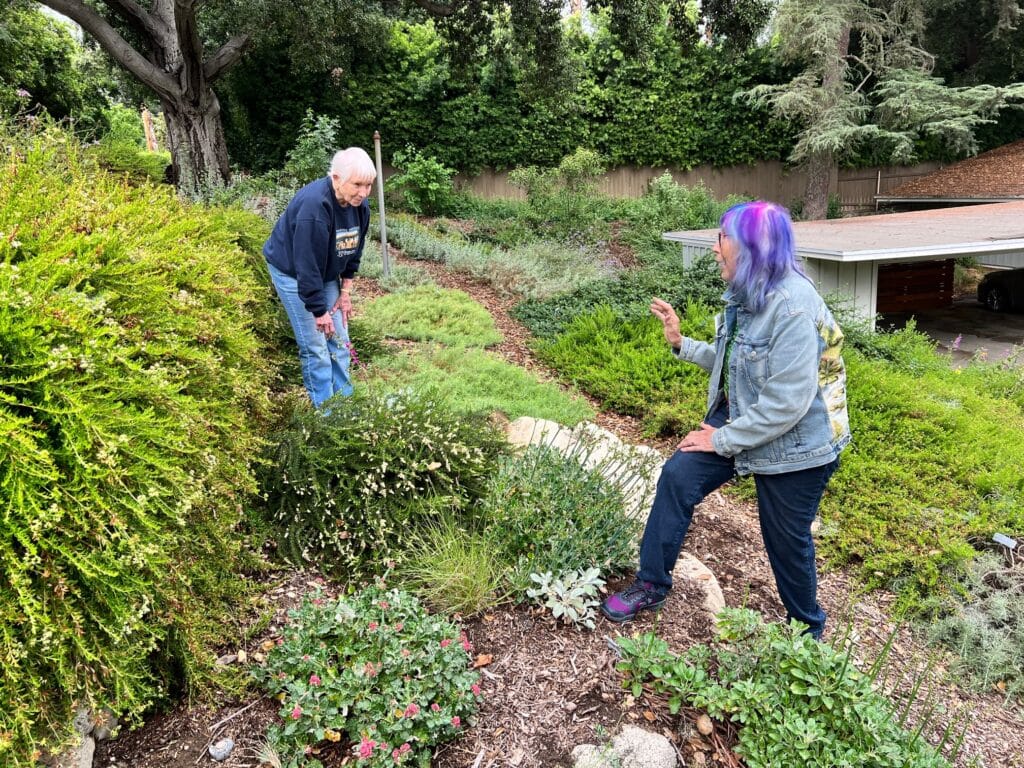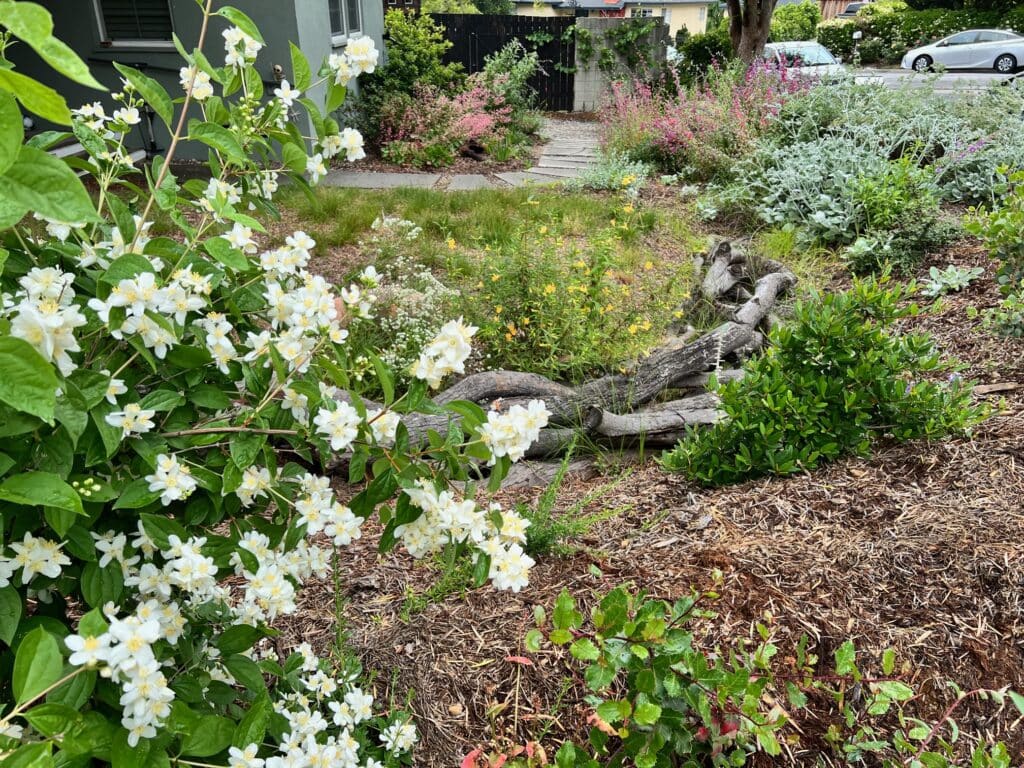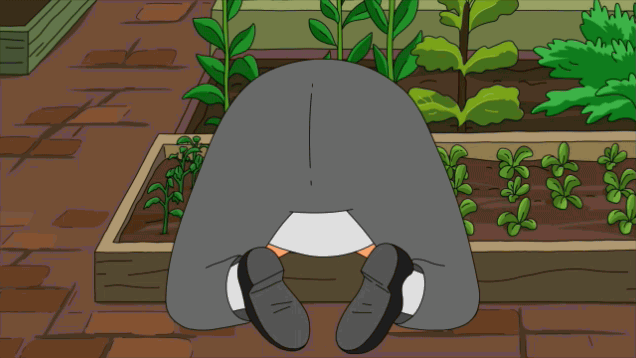The term “low maintenance” has been thrown around quite a bit in the past decade, but what does it really mean? The idea of designing a landscape that requires minimal effort and engagement has led to the emergence of xeriscaped, sterile landscapes with sparse plantings and an underbelly of weed cloth, or turfgrass landscapes that are easily mown and blown. However, even the most “xeriscaped” gravel or rock garden still requires attention, and we want to examine the ecological impacts of such practices.
It’s time to challenge the notion of low maintenance and redefine it for ourselves. What does “low maintenance” mean to you? Is it about ease and convenience? Cost savings? Perhaps it’s the desire for a spectacular garden that doesn’t demand constant involvement.

Leigh Adams, of Studio Petrichor, and our client discussing ways she can both enjoy the garden and manage a few things herself in the garden with minimal effort.
However, much like parenting, creating a living, breathing, and breathtaking garden experience requires our active participation. Our connection with the soil, the source of our sustenance, teaches us the importance of nurturing life. After all, life happens outside, where we evolved. And here’s the best part: a carefully planned and mindfully implemented garden doesn’t have to mean weekly maintenance.
Now, let’s explore ten “whole-systems garden” tips to reimagine garden maintenance:
1. Carbon in the soil means water in the soil: Nurture the soil by mulching, leaving leaves in place, and keeping green waste onsite. This enhances the soil’s water holding capacity and nutrient value.
2. Integrate rainfall: Incorporate cisterns, bio-swales, rain gardens, or simply mulching to create a garden that relies more on natural rainfall than supplemental watering, making it easier to manage.
3. Right plant, right place: Understand each plant’s potential based on site and soil conditions to avoid over- or under-planting, and also…give yourself a break. We all learn this by doing!
4. Think community: Design with hydro-zoning and plant communities in mind. Group plants with similar water requirements together, as they support one another.
5. Embrace local, native plants: Species that have evolved in your region offer water optimization, biodiversity, and a sense of local pride.
6. Be the irrigation controller: Overwatering can hinder plant growth. Allow your garden to establish with deeper, infrequent waterings. Many native plants are naturally drought resilient.
7. Identify the babies: Learn to distinguish between desirable and undesirable sprouting plants, particularly if you want to cultivate wildflowers. A quick walk through the garden with a cup of coffee is all it takes to stay on top of this.
8. Garden with the seasons: Weekly visits may not be necessary unless you desire a perfectly manicured garden. Adjust your expectations realistically and plan visits on a quarterly, monthly, or every-three-weeks basis.
9. Hire a professional: If your life is too busy, consider reaching out to professionals in your community who understand the nuances of seasonal maintenance. The paradigm is shifting, and innovative individuals are doing amazing things. Check out Saturate for more information.
10. Pass it on…back to the Earth: In honor of life cycles, all of the prunings, leaf drop, and anything produced by the garden could be returned to the garden. Whatever you sweep up can be distributed into the garden and support a healthy soil microbiome.

The Studio Petrichor garden laboratory populated with CA native plants that thrive on rainwater and supplemental watering 1x a month during between July and November.. Rainwater harvesting, a native plant community-based approach, and how we nurture the soil are just a few reasons this garden is so resilient.
We understand that life is busy, filled with noise and distractions. Our goal is to capture your attention for a moment and redirect it to the garden. Even if you haven’t yet dreamed up your ideal garden, rather than labeling it as “low maintenance,” think of it as an opportunity for self-discovery. You can save time and money while embracing the ecological heroism of nurturing life outside in your garden—truly a powerful way to honor Mother Earth!
In conclusion, let’s acknowledge the healing power of the outdoors: its ability to reduce stress, inspire, and so much more. We invite you to embrace the journey rather than focusing on the destination.
Team Petrichor

